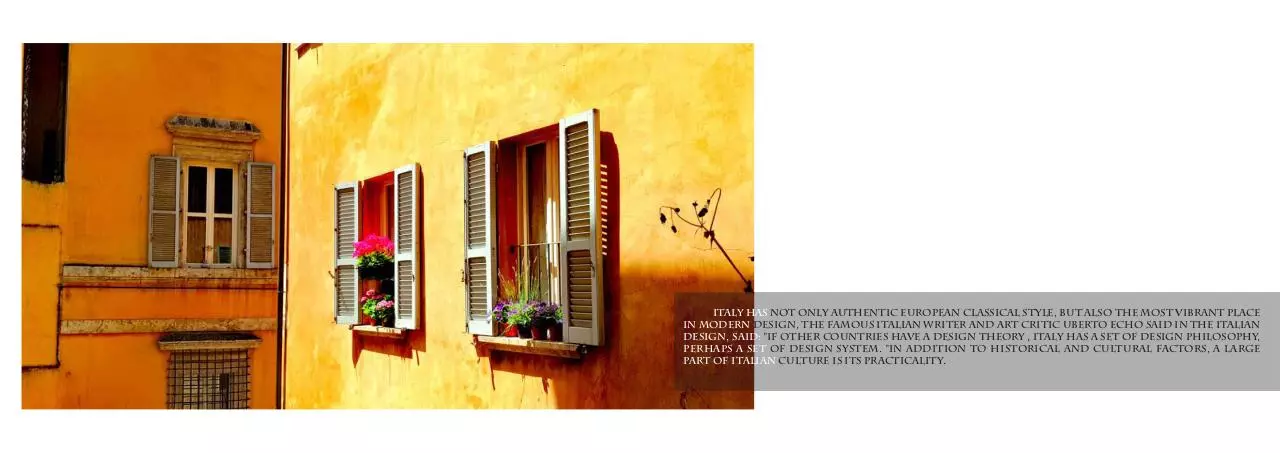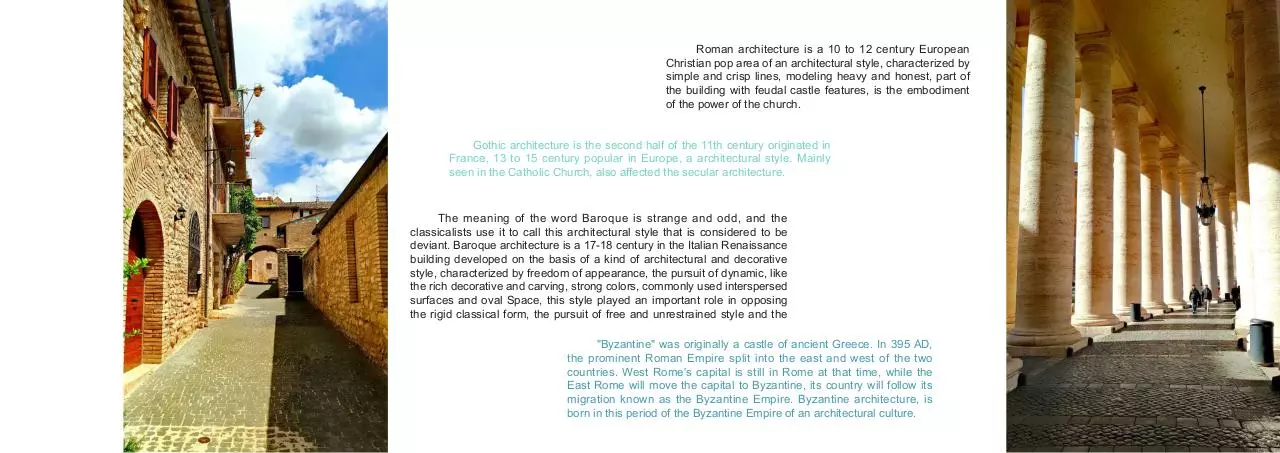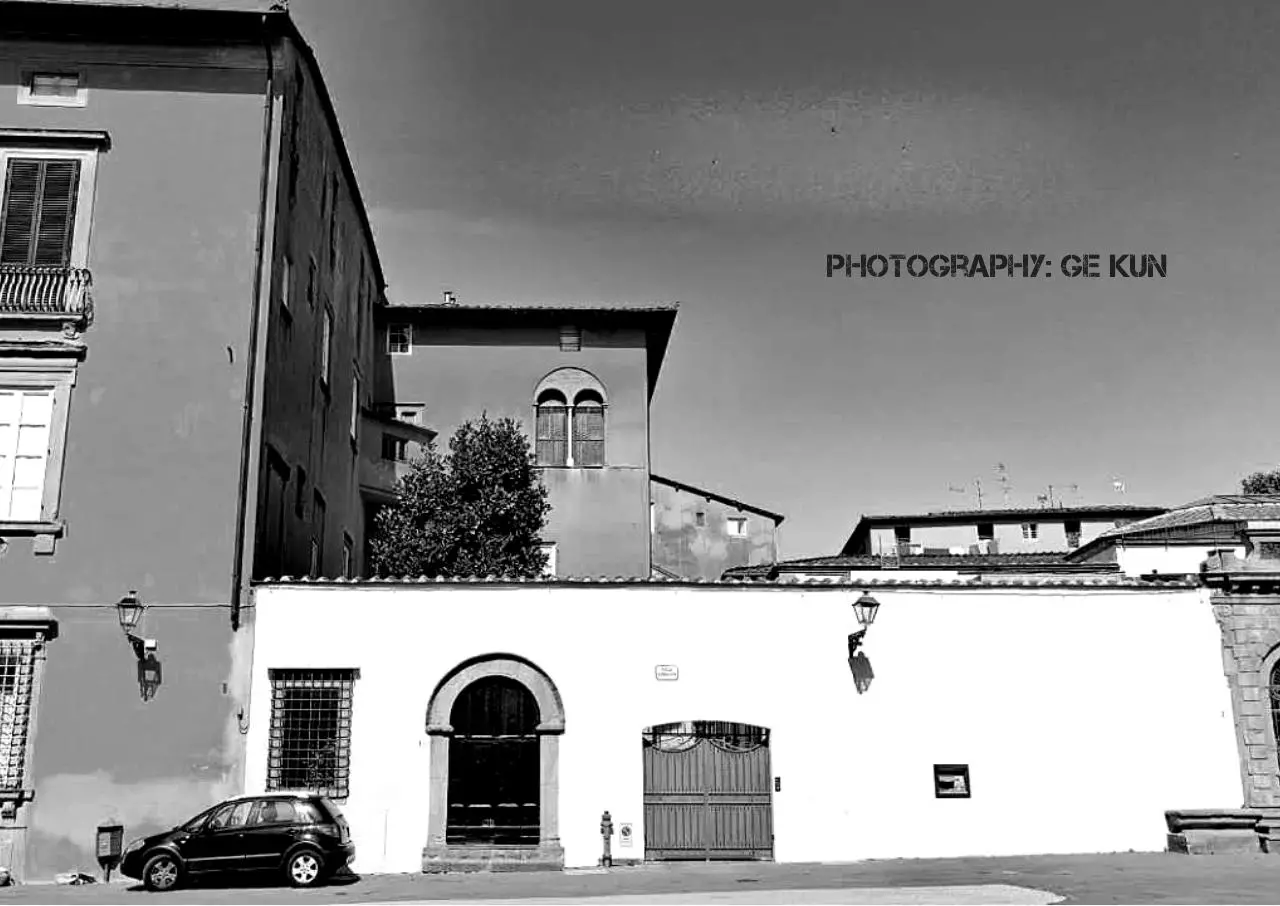gekun 5 (PDF)
File information
This PDF 1.4 document has been generated by Adobe InDesign CC 2015 (Windows) / Adobe PDF Library 15.0, and has been sent on pdf-archive.com on 16/03/2017 at 00:15, from IP address 79.41.x.x.
The current document download page has been viewed 351 times.
File size: 2.86 MB (5 pages).
Privacy: public file





File preview
Beautiful building
travel
culture
With the frequent regime change and the evolution
of literary thought, coupled with the influence of the
culture of the ship, the Italian architecture presents a
variety of unique style and unique charm. All kinds of
genre here together, alternating, integration, for the
history of Italy made an indelible mark!
The Italian style is the
ancient Greek and Roman
tradition of the general style
of meaning, it developed
into a human dignity and the
awakening of scientific value.
Due to the emergence of
famous artists such as Leonardo
da Vinci and Raphael, Italy was
in the limelight in Europe. During
this period, the Italian design
began to emphasize "secularity".
By the time of 1500, the Italian
houses and palaces had envied
the whole of Europe. Even
in today's diverse world, the
annual fashion show, furniture
exhibition and art exhibition held
in Milan are still the highest in
the world.
Italy has not only authentic European classical style, but also the most vibrant place
in modern design, the famous Italian writer and art critic Uberto Echo said in the Italian
design, said: "If other countries have a design theory , Italy has a set of design philosophy,
perhaps a set of design system. "In addition to historical and cultural factors, a large
part of Italian culture is its practicality.
Roman architecture is a 10 to 12 century European
Christian pop area of an architectural style, characterized by
simple and crisp lines, modeling heavy and honest, part of
the building with feudal castle features, is the embodiment
of the power of the church.
Gothic architecture is the second half of the 11th century originated in
France, 13 to 15 century popular in Europe, a architectural style. Mainly
seen in the Catholic Church, also affected the secular architecture.
The meaning of the word Baroque is strange and odd, and the
classicalists use it to call this architectural style that is considered to be
deviant. Baroque architecture is a 17-18 century in the Italian Renaissance
building developed on the basis of a kind of architectural and decorative
style, characterized by freedom of appearance, the pursuit of dynamic, like
the rich decorative and carving, strong colors, commonly used interspersed
surfaces and oval Space, this style played an important role in opposing
the rigid classical form, the pursuit of free and unrestrained style and the
"Byzantine" was originally a castle of ancient Greece. In 395 AD,
the prominent Roman Empire split into the east and west of the two
countries. West Rome's capital is still in Rome at that time, while the
East Rome will move the capital to Byzantine, its country will follow its
migration known as the Byzantine Empire. Byzantine architecture, is
born in this period of the Byzantine Empire of an architectural culture.
Photography: Ge Kun
Download gekun-5
gekun-5.pdf (PDF, 2.86 MB)
Download PDF
Share this file on social networks
Link to this page
Permanent link
Use the permanent link to the download page to share your document on Facebook, Twitter, LinkedIn, or directly with a contact by e-Mail, Messenger, Whatsapp, Line..
Short link
Use the short link to share your document on Twitter or by text message (SMS)
HTML Code
Copy the following HTML code to share your document on a Website or Blog
QR Code to this page

This file has been shared publicly by a user of PDF Archive.
Document ID: 0000569641.